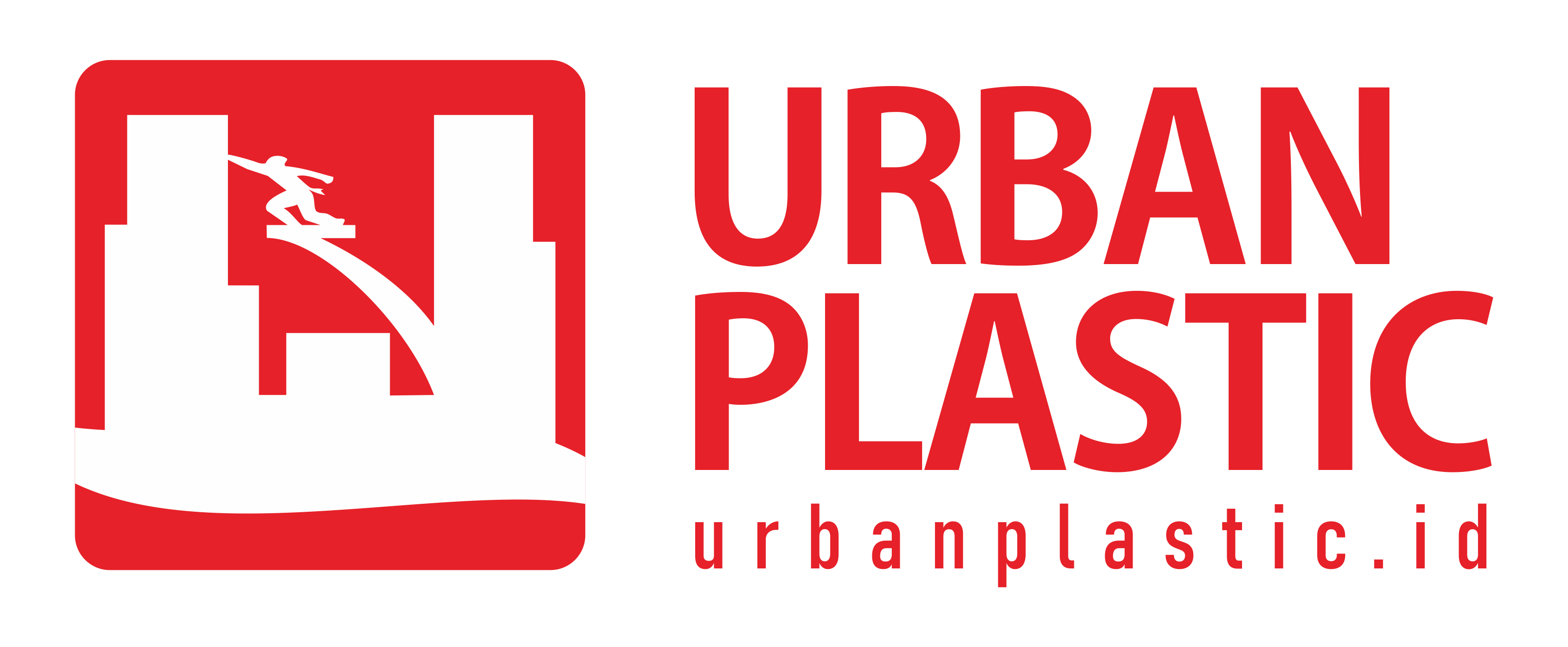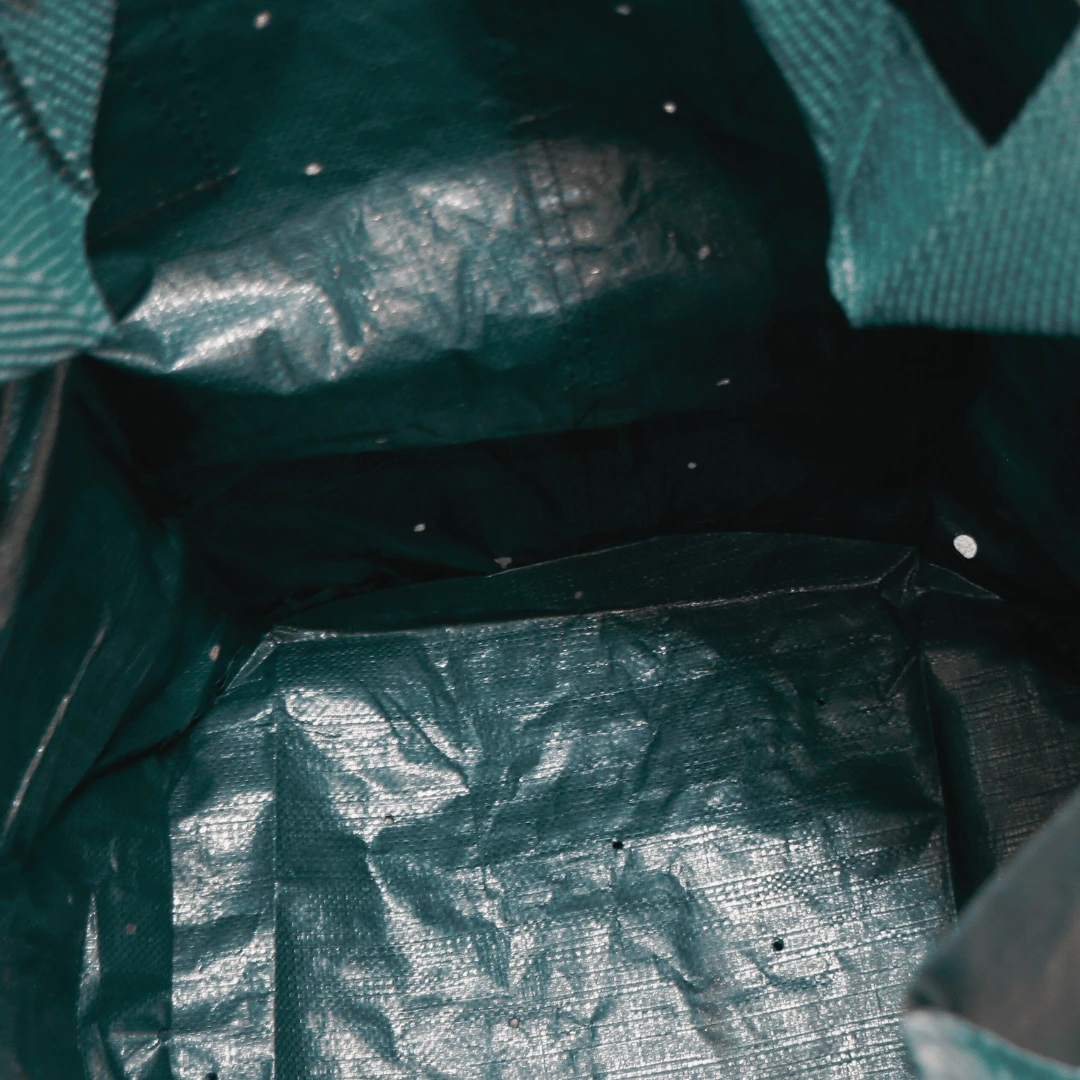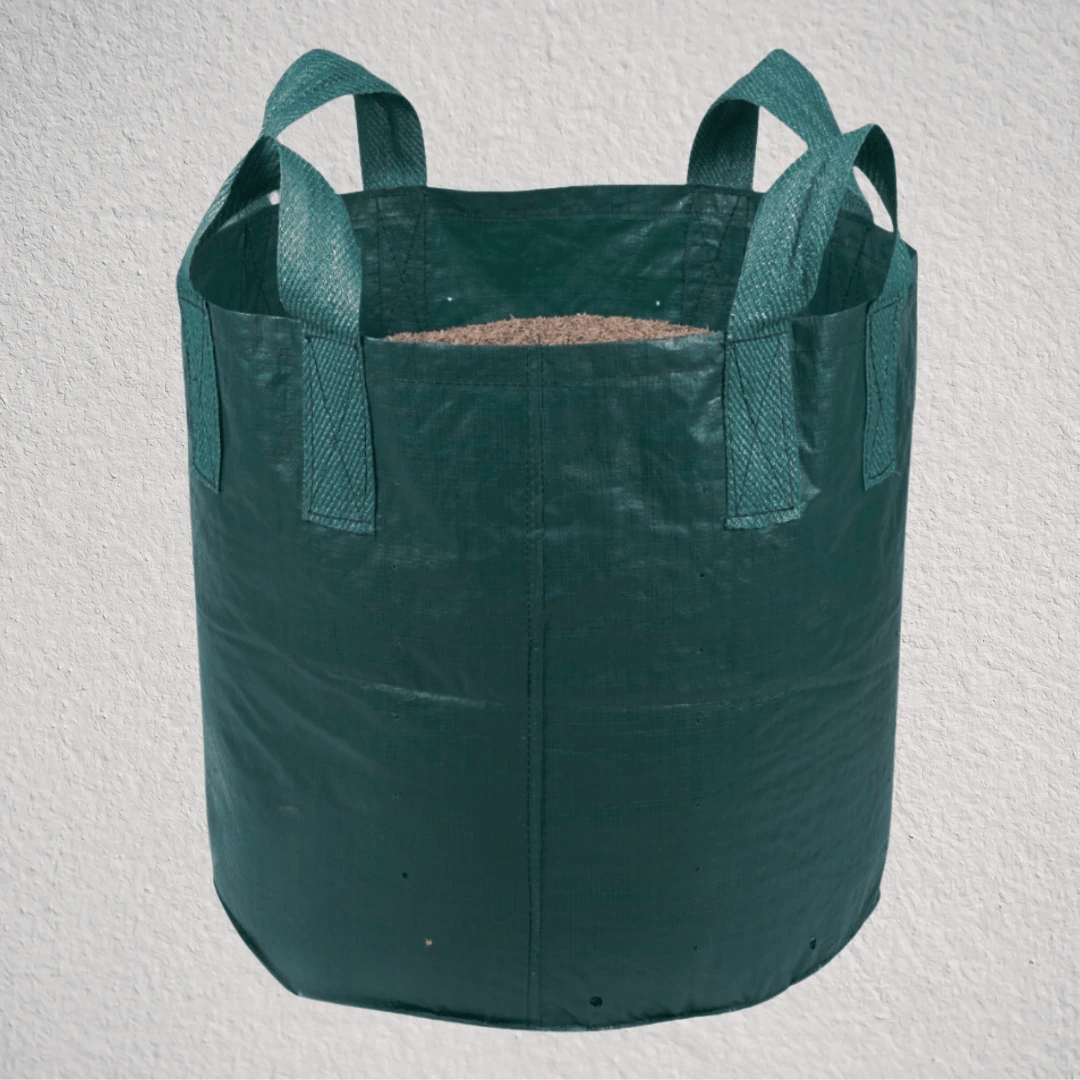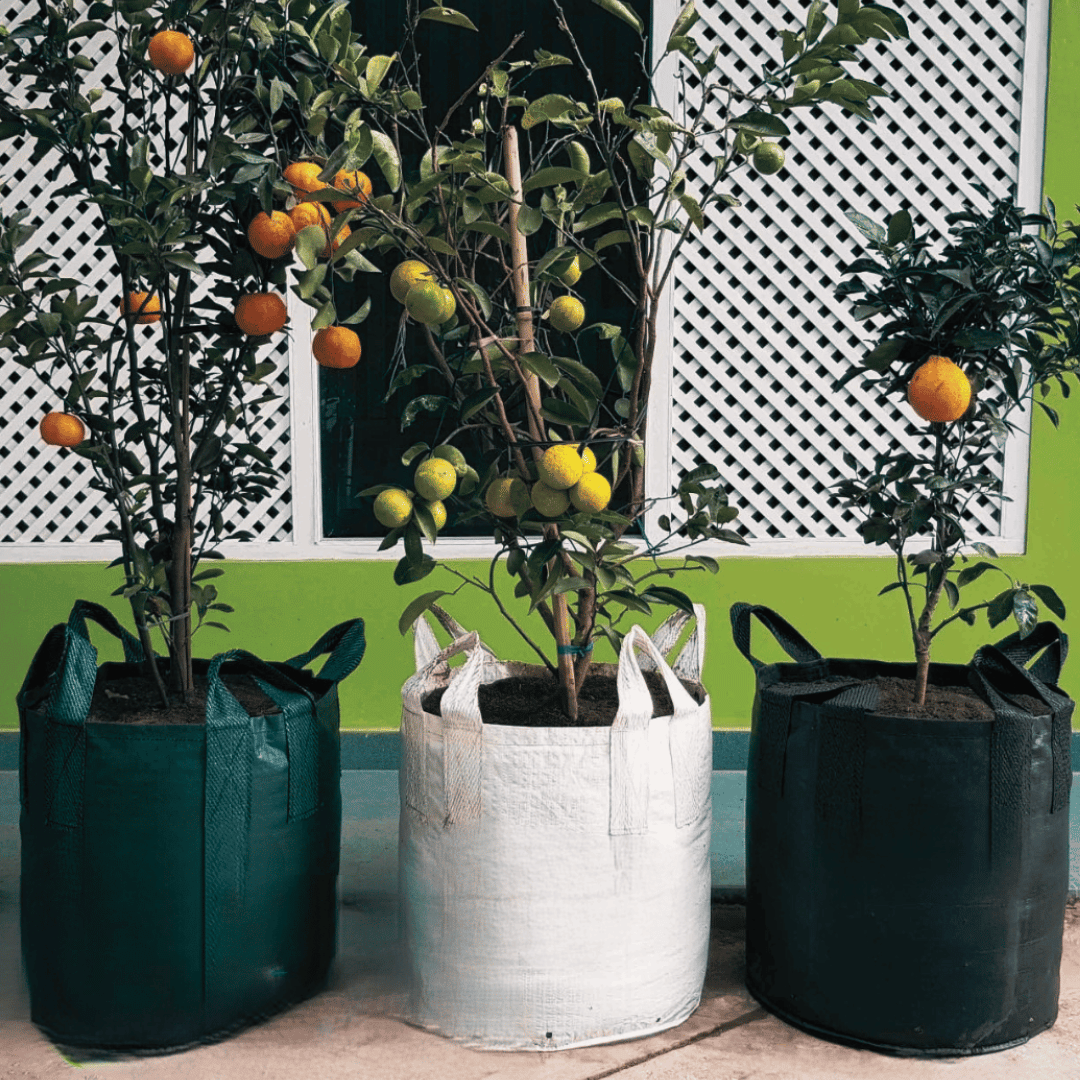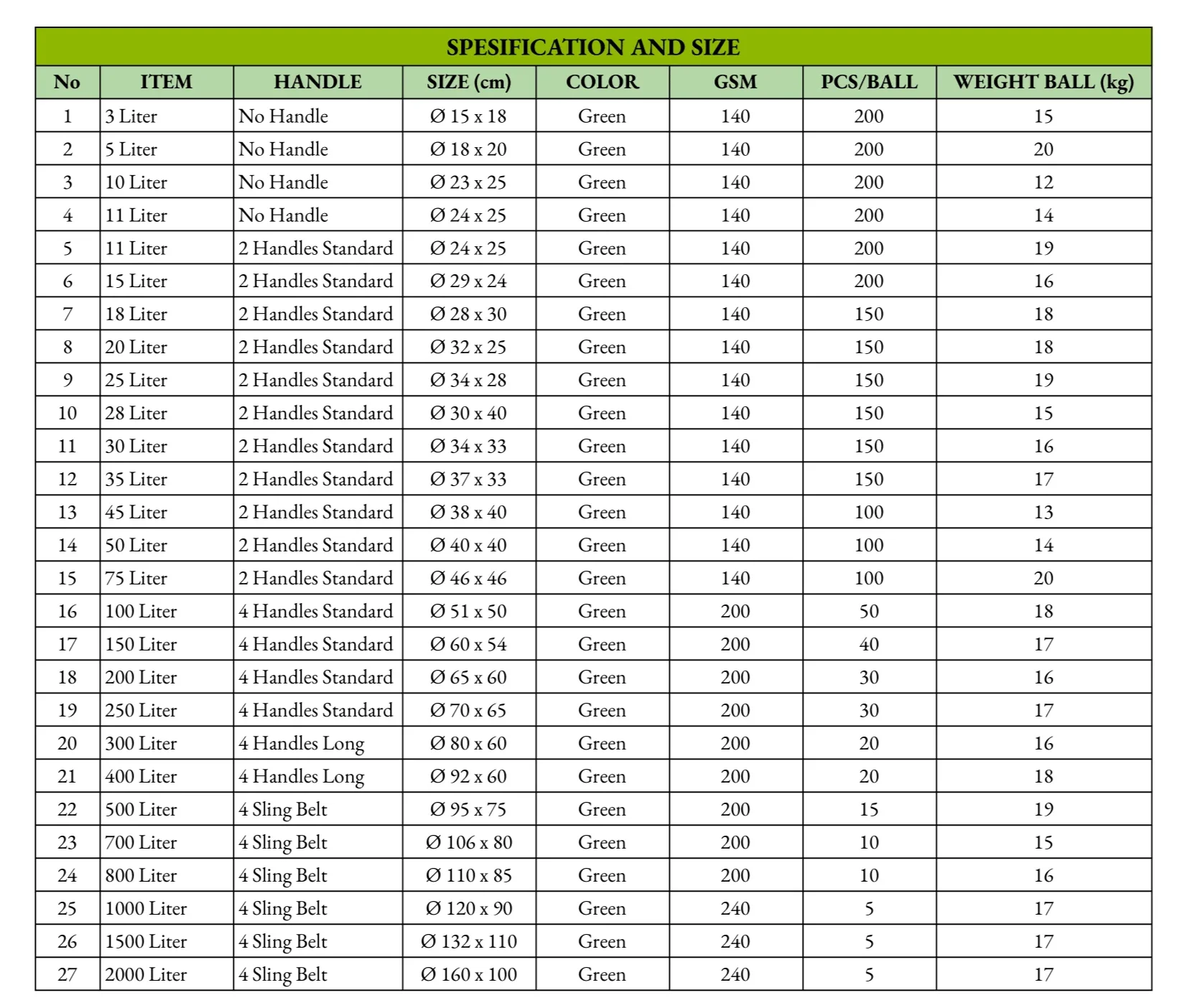Planter Bag
Urban Plastic Planter Bag, crafted from durable HDPE material, offers an innovative and cost-effective solution for gardening enthusiasts in urban or confined spaces, ensuring ease of use, flexibility, and practicality, and is suitable for a wide variety of plants.
Advantages of Urban Plastic Planter Bag
- Urban Plastic Planter Bags, crafted from high-quality High-Density Polyethylene (HDPE), offer an innovative solution for urban gardening and commercial plant cultivation. These bags, with their exceptional UV resistance, are engineered to withstand over five years of exposure to direct sunlight and rain, making them ideal for diverse climatic conditions, from the scorching heat of the Middle East to the freezing temperatures of Europe.
- The design of these bags incorporates a unique fabric that allows sunlight penetration, essential for plant growth. Additionally, the bags are equipped with multiple drainage holes, enhancing moisture and air circulation. This feature is crucial for root pruning, encouraging the development of a robust and healthy fibrous root system. Consequently, plants grown in these bags exhibit superior growth compared to traditional methods.
- One of the key advantages of Urban Plastic Planter Bags is their ease of handling. Each bag is fitted with heavy-duty belt handles, facilitating effortless transportation. Whether lifted by hand, forklift, or crane, the design ensures that the bags can be moved efficiently and safely, provided all looped handles are used simultaneously.
- From a logistical perspective, these planter bags are a game-changer. They are packaged in compressed bales, each weighing up to 20 kilograms, maximizing storage efficiency and simplifying the shipping process. This feature makes them an attractive option for both small-scale gardeners and large-scale agricultural operations.
- Aesthetically, Urban Plastic Planter Bags are available in standard colors like green, black, and white. However, to cater to specific branding or aesthetic preferences, other color variants and customizations, such as logos or trademarks, can be made available upon request. This customization offers an excellent opportunity for businesses to promote their brand uniquely and effectively.
- The rounded bottom design of these bags is another notable feature. It not only simplifies the filling process but also ensures stability and an attractive appearance when placed in various settings. This design aspect is especially beneficial for urban spaces where presentation is key.
- Urban Plastic Planter Bags are also cost-effective in terms of fertilization. Since the bags contain the plant and its root system, fertilizers are used more efficiently, with minimal absorption by external plants or weeds. This efficiency leads to significant savings over time.
- The versatility of these planter bags cannot be overstated. They are suitable for a wide range of plants, including vegetables, fruit plants, flowers, herbs, palm trees, and more. With sizes ranging from 3 liters to a massive 3000 liters, and the option for custom sizes and designs, these bags can accommodate virtually any planting need, making them an indispensable tool for modern urban agriculture and commercial plant cultivation.
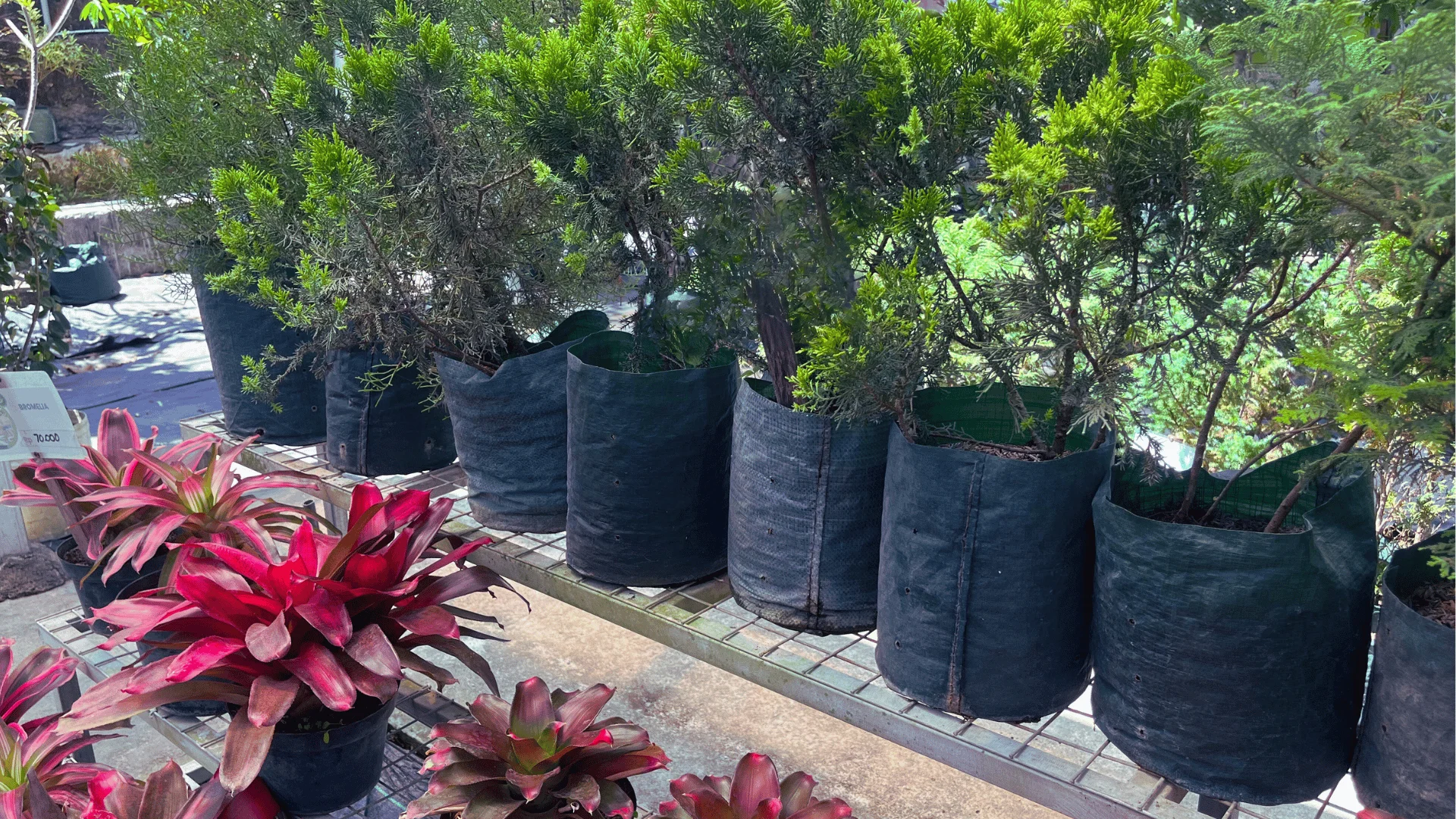

Are planter bags better than pots?
Planter bags offer advantages over traditional pots, particularly in terms of flexibility and portability. They are lighter, easier to move, and often more affordable, making them ideal for small spaces or urban gardening. Their fabric material promotes better root aeration and drainage, potentially leading to healthier plant growth. However, pots have their merits too, such as durability and aesthetic variety. The choice between planter bags and pots largely depends on specific gardening needs, space constraints, and personal preferences.
Why use planter bags?
Using planter bags offers several benefits. They are lightweight and portable, making them ideal for small or urban spaces. The flexible fabric allows for better root aeration and drainage, promoting healthier plant growth. Planter bags are also space-efficient, easily foldable for storage when not in use. They’re cost-effective and adaptable to various plants, from vegetables to ornamentals. Additionally, they can reduce the risk of soil-borne diseases and are a practical choice for those seeking a convenient and efficient gardening solution.
How do you plant a bag planter?
To plant in a bag planter, begin by selecting a suitable planter bag and a location with adequate sunlight. Fill the bag with a high-quality potting mix, leaving some space at the top. Plant your seeds or seedlings at the recommended depth and spacing. Water the plants gently to settle the soil. Ensure proper drainage and avoid over-watering. As plants grow, provide support if needed, and regularly check for pests and diseases. Finally, fertilize as per the plant’s requirements to encourage healthy growth.
What kind of soil do planter bags need?
Planter bags require a well-draining, nutrient-rich potting mix. Unlike garden soil, potting mix is lighter and provides better aeration, crucial for healthy root development. It typically contains a blend of peat moss, vermiculite or perlite, and compost or other organic matter. This composition ensures adequate moisture retention while preventing waterlogging. Adding a slow-release fertilizer can enhance nutrient availability. For specific plants, like succulents or orchids, choose a mix tailored to their needs to ensure optimal growth and health.
Will roots grow through the planter bag?
Roots can grow through some types of planter bags, especially those made from thinner, more porous materials. These bags promote air pruning, where exposed roots dry out and stop growing, encouraging the growth of healthier root systems within the bag. However, thicker or lined planter bags may prevent roots from penetrating through. The extent to which roots grow through depends on the material of the planter bag and the nature of the plant’s root system.
